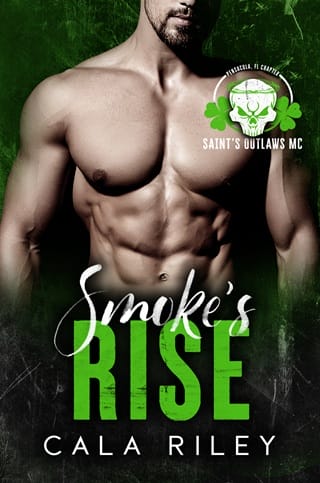40
40
THE HALL OF Justice on Temple Street in downtown L.A. was ninety-nine years old. For most of that near century, the building housed on its top floors a jail operated by the sheriff's department. But the incarceration needs of the county outgrew it, and a county jail complex was built, and for many years after that, the Hall's cells were left empty. Eventually, the needs of the district attorney's office, which had a growing staff commensurate with the city's crime and incarceration numbers, led to a renovation that put prosecutors into the cells that were once home to the prosecuted. The office of deputy district attorney Carol Plovc, of the Major Crimes Unit, was in one of the refurbished jail cells on the fourteenth floor. There were no steel bars remaining, but the rear wall of the room received light through a window of thick glass gridded by ironwork into six-inch-by-six-inch escape-proof squares.
In its previous use, the office had likely been a multi-inmate cell, because it was spacious enough for a bookcase, a desk, and ample seating. Ballard, Maddie, and Hatteras sat comfortably across from Plovc while she looked over the photos spread across her desk. She had been given the full files, the ones containing all the photos from Emmitt Thawyer's storage room. Plovc, who was in her early forties and a seasoned lifer in the office, grimaced as she looked through the photos displaying the degradation, torture, and murder of eight women.
"We had the photo analysis unit do a comparison of the Betty pictures to known Elizabeth Short photos," Ballard said. "It came back as a ninety-two percent likelihood that it's a match."
Plovc spoke without looking up from the photos.
"That leaves eight percent," she said. "That's where reasonable doubt lives."
Though Plovc was the sign-off to clear cases where the identified suspect was dead, this was no rubber stamp. To prevent investigators from seeking clearances with only thin evidence, she had a protocol she followed. At the top of this checklist was the likelihood, or not, of a conviction had a suspect been charged.
"We were thinking that the Ford case kind of eliminates reasonable doubt," Ballard said. "Her photos were in the same file cabinet. She disappeared a few years after Short was murdered. Colleen located her family, and they identified her from the photos. Our theory is that the Elizabeth Short murder—the whole Black Dahlia thing and the massive attention it got—made Thawyer go underground. He kept killing but he stopped displaying his kills."
"What did he do with the bodies?" Plovc asked.
"He probably buried them," Ballard said.
"Griffith Park was not so far away from the house," Hatteras said.
Plovc looked up from the photos. "I really only want to hear from the sworn officers on this," she said.
"Sure, I understand," Hatteras said, looking a little cowed.
"The point is that we've identified a pattern," Ballard said. "Multiple women's photos found in the same drawer. Our suspect was a photographer. It's the oldest trick in the book—luring women with the promise of photos that will help them achieve their dreams. Been done a hundred times, but maybe it started with Thawyer."
"You're missing my concern here," Plovc said. "I have no doubt that these photos are legit and that these women were killed in truly horrible ways by this man Thawyer. But the jump to Elizabeth Short has an eight percent hole in it. And with a case of this magnitude… I mean, this case is part of Los Angeles history. There have been movies and books and TV—James Ellroy's book is out there, an ex-LAPD cop who says his dad was the killer is out there, so many theories. So we have to be one hundred percent sure, not ninety-two percent sure."
Ballard stood up.
"Okay, I brought her suitcase, and I want to show you something," she said.
Ballard had left the suitcase by the door when they entered the office. It had tweed sides with a leather handle and edging. It had double snap locks and an ID plate with Elizabeth Short handwritten on it along with a Boston address.
"The guy who came up with the idea of putting wheels on a suitcase was a genius," she said. She carried the suitcase by the handle back to her seat and sat down with it across her knees. She popped the locks and opened it.
"This suitcase was found in a bus terminal locker about two weeks after Elizabeth Short was murdered. These were temporary lockers, so they cleaned them out every two weeks. Her name is on the ID, so the janitor called the police rather than putting it in the lost and found. It was checked for fingerprints then. Later, in the nineties, when DNA testing came along, the clothing was checked for foreign DNA, but nothing was found. But if you look at the first photo in the file, where Elizabeth is posing on the stool, you see her bra and underwear match. There is a cross-stitch pattern down the hips and it is repeated in the seams of the bra."
Ballard lifted a matching set of bra and panties from the suitcase. They were encased in clear plastic evidence sleeves. Each item had the same cross-stitch pattern of the undergarments in the photo. Plovc looked back and forth from the photo to the items Ballard was holding.
"You think that those are the same things she was wearing in this photo?" Plovc asked.
"We don't know," Ballard said. "She could have bought multiple sets at the same time. But what's clear is that they match. I think that bumps the ninety-two percent to a hundred."
"It's her," Maddie said. "It's obvious, if you ask me."
Plovc looked at Maddie, and Ballard got ready for her to tell Maddie that her opinion carried no weight in the decision she would make. But instead, Plovc swung her attention back to Ballard.
"So this suitcase was found two weeks after the murder?" she asked. "How long was it there?"
"Yes, two weeks after," Ballard said. "A lot of the records from then are gone. There is an evidence log that mentions the suitcase, but I couldn't find anything that says when it went into the locker."
"Think about it," Maddie said. "She goes to the guy for photos. He probably told her to bring a variety of clothes for various shots. She was a Hollywood hopeful. He could have told her he'd give her a whole album of different looks. Then he kills her, puts all the clothes, including her underwear, back into the suitcase, and dumps it at the bus terminal."
Plovc nodded. "Makes sense," she said. "But we have no proof of that, do we?"
"Well, we know the suitcase was Short's," Ballard said. "And the underwear matches the photo. That is Elizabeth Short in the photos and Thawyer's the guy."
Plovc nodded, but not in agreement. It was more an acknowledgment of how sure Ballard and Maddie were.
"I think I'm going to have to take this across the street," she said.
The main offices of the district attorney, including that of the top prosecutor, were located across Temple in the Criminal Courts Building. Plovc was probably passing the decision to her supervisors, maybe even to the elected district attorney.
"How long will that take?" Hatteras asked.
Plovc looked at her sharply.
"As long as it takes," she said. "There is no hurry on this. It's been seventy-seven years."
"I was just thinking of the Ford family," Hatteras said. "They want answers. Can we talk about that case?"
"Everybody wants answers," Plovc said. "And no, we're taking these as a whole. I will walk all of it across the street and get back to you as soon as a decision is made. Thank you all for coming in today. It's really exciting stuff."
Plovc started stacking the files at the side of her desk, a clear sign that the meeting was over.
 Fullepub
Fullepub 



